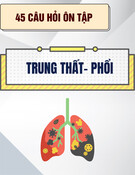
Progrès
en
urologie
(2020)
30,
684—691
Disponible
en
ligne
sur
ScienceDirect
www.sciencedirect.com
ORIGINAL
ARTICLE
Long-term
follow-up
reveals
a
low
persistence
rate
of
abobotulinumtoxinA
injections
for
idiopathic
overactive
bladder
Efficacité
et
tolérance
à
long
terme
des
injections
d’abobotulinumtoxinA
dans
le
traitement
de
l’hyperactivité
vésicale
idiopathique
M.
Barona,∗,
A.
Aubléa,
F.
Paretb,
C.
Pfistera,
J.-N.
Cornua
aUrology
Department,
Rouen
University
Hospital,
1,
rue
de
Germont,
76031
Rouen
cedex
1,
France
bUrology
Department,
Nantes
University
Hospital,
1,
place
Alexis-Ricordeau,
44000
Nantes,
France
Received
29
March
2020;
accepted
28
July
2020
Available
online
2
September
2020
KEYWORDS
OnabotulinumtoxinA;
AbobotulinumtoxinA;
Idiopathic
overactive
bladder;
Urinary
incontinence;
Detrusor
overactivity
Summary
Introduction.
—
Little
is
known
about
long-term
efficacy
and
tolerance
of
intra-detrusor
injec-
tions
of
abobotulinumtoxinA
for
management
of
idiopathic
overactive
bladder
(OAB).
We
report
long-term
efficacy
and
compliance
of
abobotulinumtoxinA
in
patients
treated
for
OAB.
Methods.
—
All
patients
treated
with
abotulinumtoxinA
for
OAB
in
a
tertiary
reference
centre
between
2005
and
2012
were
included
in
a
retrospective
analysis.
Patients
received
150,
250
or
500
U
of
abotulinumtoxinA
as
first
injection.
The
primary
endpoint
was
the
discontinuation
rate
at
5
years.
Other
outcomes
of
interest
were:
rate
of
failure,
reasons
for
discontinuation
and
subsequent
treatment
elected
in
those
who
did
not
persist
with
abobotulinumtoxinA.
Results.
—
Fifty-nine
patients
(50
women
and
9
men)
were
included.
Forty-one
patients
(69.4%)
received
250
U
of
abobotulinumtoxinA
as
first
injection.
Thirteen
patients
(22%)
received
500
U
and
5
(8.4%)
received
150
U
of
BoNT-A.
Median
follow-up
was
83.6
months
[0.3—183.6].
Median
number
of
injections
per
patient
was
2
[1—15]
and
median
reinjection
interval
was
10.7
[3—86.4]
months.
The
estimated
5-year
discontinuation-free
survival
rate
was
23.4%.
Fourteen
patients
(23.7%)
experienced
persistent
improvement
of
symptoms
and
12
patients
(20.3%)
stopped
the
injections
because
of
tolerability
issues.
Main
cause
of
discontinuation
was
primary
failure,
which
occurred
in
21
patients
(35.5%).
∗Corresponding
author
at:
Urology
Department,
Rouen
University
Hospital,
1,
rue
de
Germont,
76031
Rouen
cedex
1,
France.
E-mail
address:
maximilienbaron@hotmail.com
(M.
Baron).
https://doi.org/10.1016/j.purol.2020.07.242
1166-7087/©
2020
Elsevier
Masson
SAS.
All
rights
reserved.






























